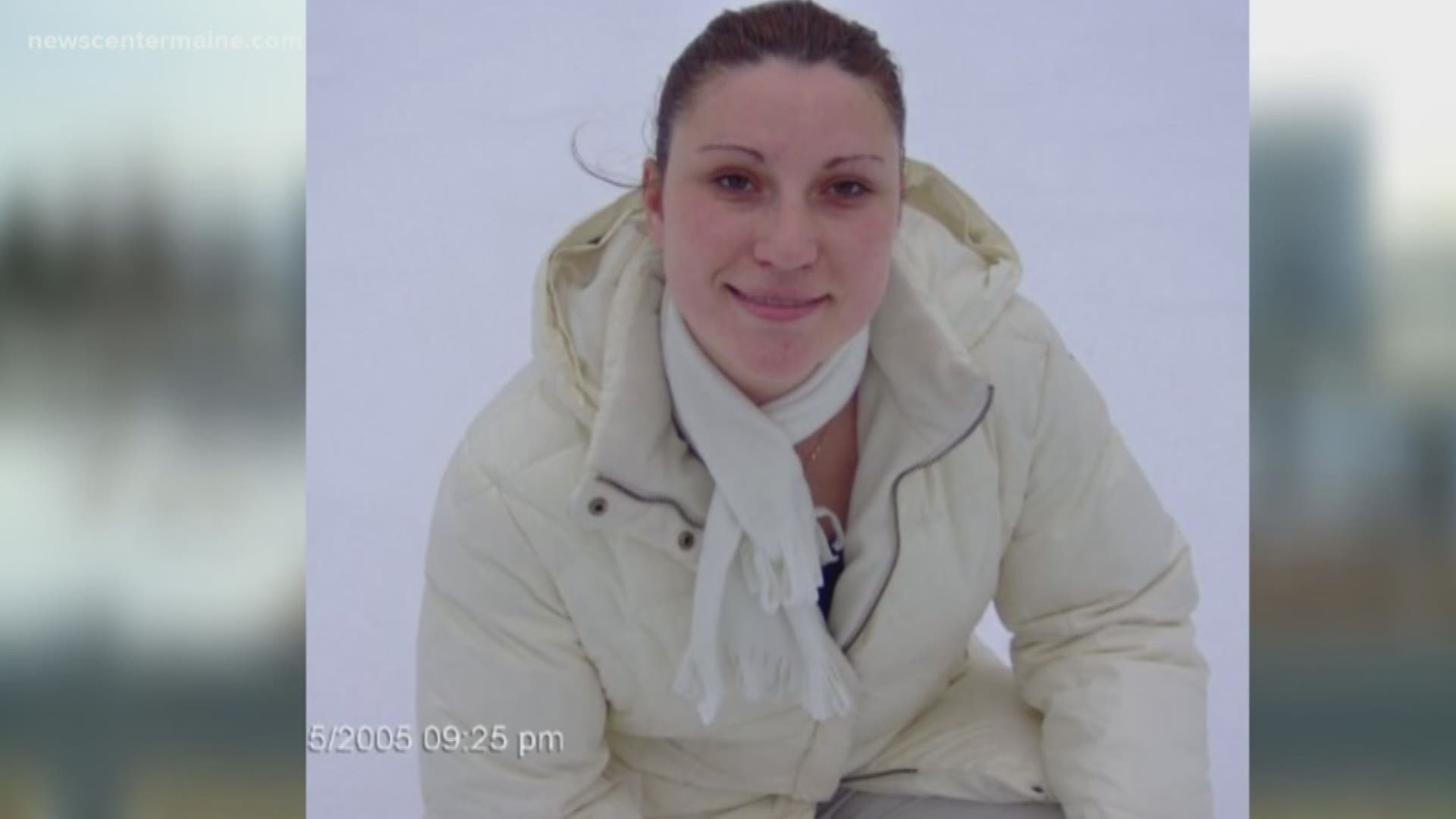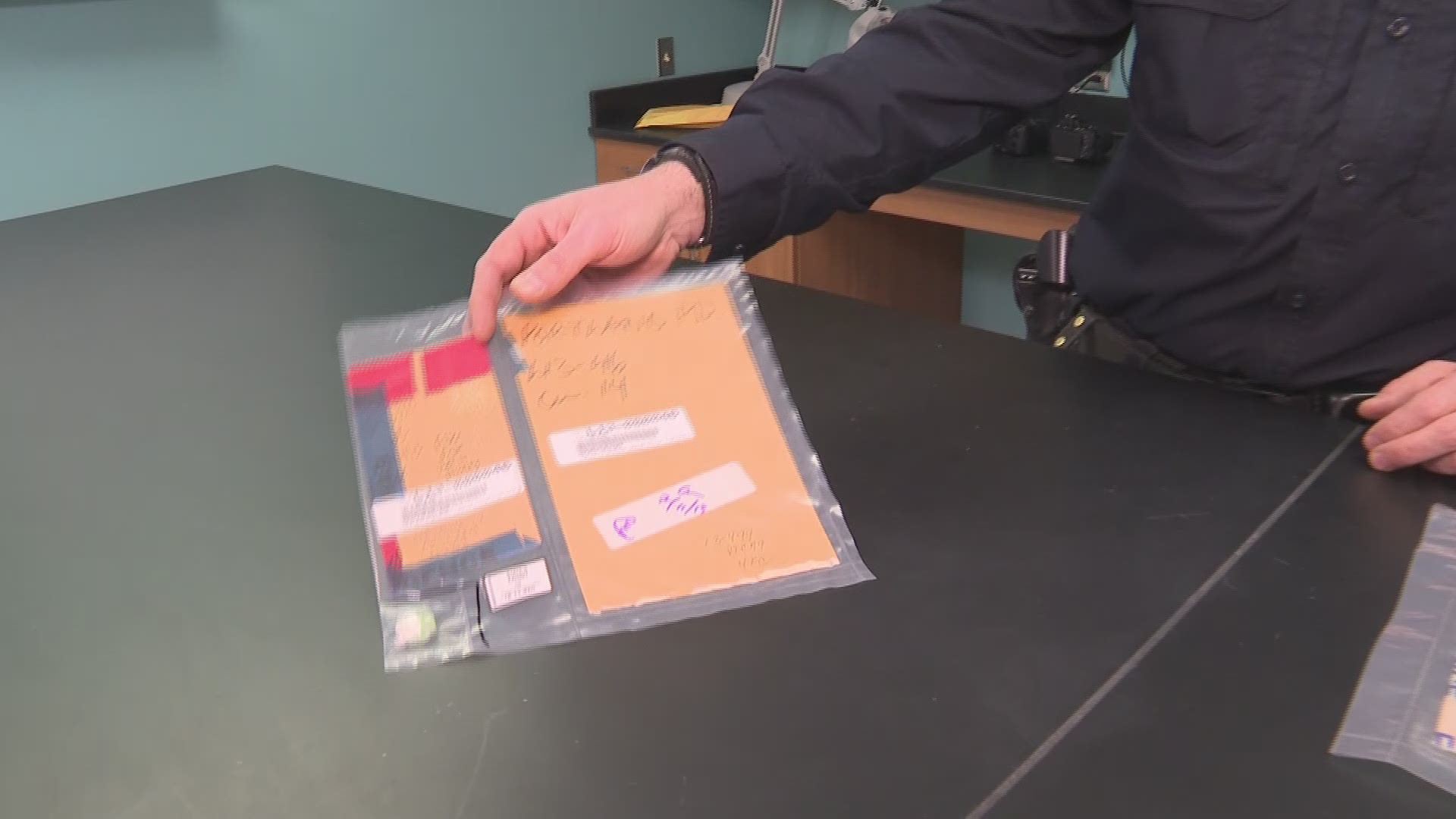PORTLAND, Maine —
WIFE GOES MISSING
Margarita Fisenko Scott was 13 years old when she left Kazakhstan in 1997 to come to the United States. She met her future husband Cary Scott in Florida.
In 2007, the couple moved to Westbrook to be closer to Margarita’s family. Things were going well.


But in the summer of 2012 things started to deteriorate. Margarita, or Rita, as she was called, had developed a drug problem. In November 2012 Margarita went missing.
Her husband, Cary was upset and told Westbrook police he thought his wife was staying with drugs dealers in Portland. When he tried to report their red Chevy Trailblazer missing, police told Cary there was nothing they could do because the vehicle was marital property.
Cary continued to call Margarita’s cell phone but she never answered.
As the days and months passed, Cary and her family grew increasingly concerned. It had now been months since anyone had heard from her. Not even during the holidays.
Then, the following January, a clue surfaced.
On Jan. 17, 2013, a friend of Cary’s was crossing the Motel 6 parking lot in Portland when he spotted a Red Chevy Trailblazer he thought might be Cary’s.
Cary showed up with his own key. He got in, started it up and then cleared the snow off the windshield. That’s when he noticed one of the tires was flat. Cary opened a rear door to get a car jack and made a gruesome discovery.
Margarita’s frozen, partially decomposed body was crumpled behind the driver’s seat. She had been shot, once, in the neck.


POLICE HAVE A HOMICIDE
Victor Cote, an evidence technician (ET), was one of the first people called to the scene.
“You have to anticipate where a case will go,” said Cote, a 22-year veteran of the police department. “On all these cases our main job is documentation. First and foremost, document whatever’s there,” he said, whether what they find can be potentially linked to the crime or not.
The car had clearly been in the parking lot for a while, plowed in during a couple of snowstorms.
“So did the assailant or whoever drove the vehicle drop anything getting out of the vehicle?” Cote remembers thinking.
Cote and the other ETs made the decision to collect the snow around the car. They shoveled it into a department pick-up truck and drove it back to police headquarters. The SUV was towed there as well.
“(We left it in) the heated basement, just allowed it (the snow) to melt overnight. Anything in there would be left on the tarp,” Cote recollects.

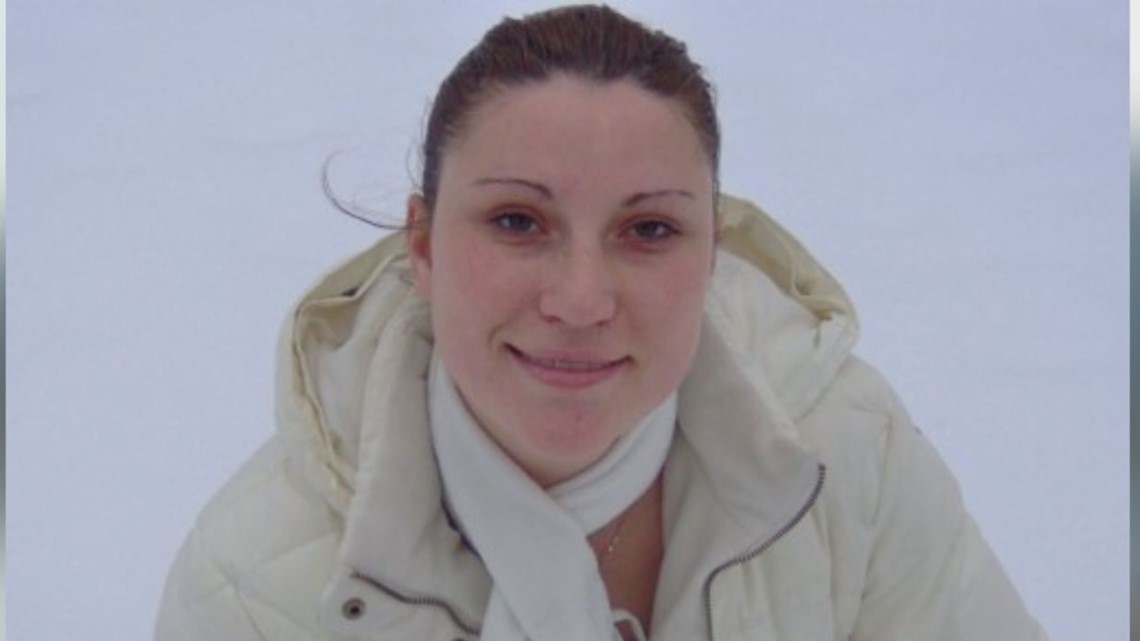
What did they find?
Unfortunately, Cote said, "an unrelated receipt, but you still have to try. You don’t want to walk away and leave evidence out there."
The ETs then examined the SUV. They took photographs, swabbed for DNA, processed the car for fingerprints, even documented seat positions. They were meticulous.
"You only get one shot at it,” Cote says.
Once everything was documented, Margarita’s body was removed and taken to the medical examiner’s office in Augusta for an autopsy. Meanwhile, a lack of visible blood in the SUV shed another clue — Margarita was not killed inside the vehicle.
“So, you have to start thinking about where is the scene, where did this occur?” Cote remembers.
Their biggest obstacle was time. So much time had passed since Margarita had died and when she was found. Cote never found any paperwork or receipts in the car dated later than Nov. 9. It was now Jan. 17.
The evidence technicians searched Cary’s Westbrook apartment and ruled out that location as the possible scene of the crime.
BREAK IN THE CASE
A tip led police to an apartment on West Concord Street in Portland, just two miles from the Motel 6 parking lot.
Margarita had been staying at the apartment with her boyfriend Anthony Pratt, a drug dealer from New York. Pratt came to Maine to help Christopher Jennings, also from New York, sell drugs.
Jennings, his wife Tunile, and their two very young children lived in the apartment as well. When Portland Police detectives arrived at the apartment to interview Pratt and the Jennings they were greeted by a surprise.
Not only had Pratt and the Jennings moved out, but the building had been bought and was in the process of being renovated. Police immediately halted the renovation and the ETs were still called in to search.
“The place was under full construction, full renovation. Floors had been taken out, walls had been taken out, ceilings had been taken out, there was demo debris dust everywhere."
Cote thought, “the likelihood of me finding anything here at this point is probably pretty slim. But you still have to go through the process”
In the basement, Cote spotted a dark stain on the concrete.
“It was immediately evident to me, from 15 feet away, that that was a significant blood pool. We’re able to look up and see saturation coming through the floorboards, that brings us back into the living room area.”
Cote was confident they found where Margarita had been shot but their crime scene was in shambles. Four evidence technicians spent close to four days in the apartment, methodically uncovering more pieces to the puzzle.
“We can see blood on the protected side of the door and significant dried blood where the baseboard had been,” Cote remembers.
They combed through debris which was piled in the dining room and there, they found a baseboard with blood on it and worked to recreate the living room by putting back the baseboard, trim and rehanging some of the paneling.

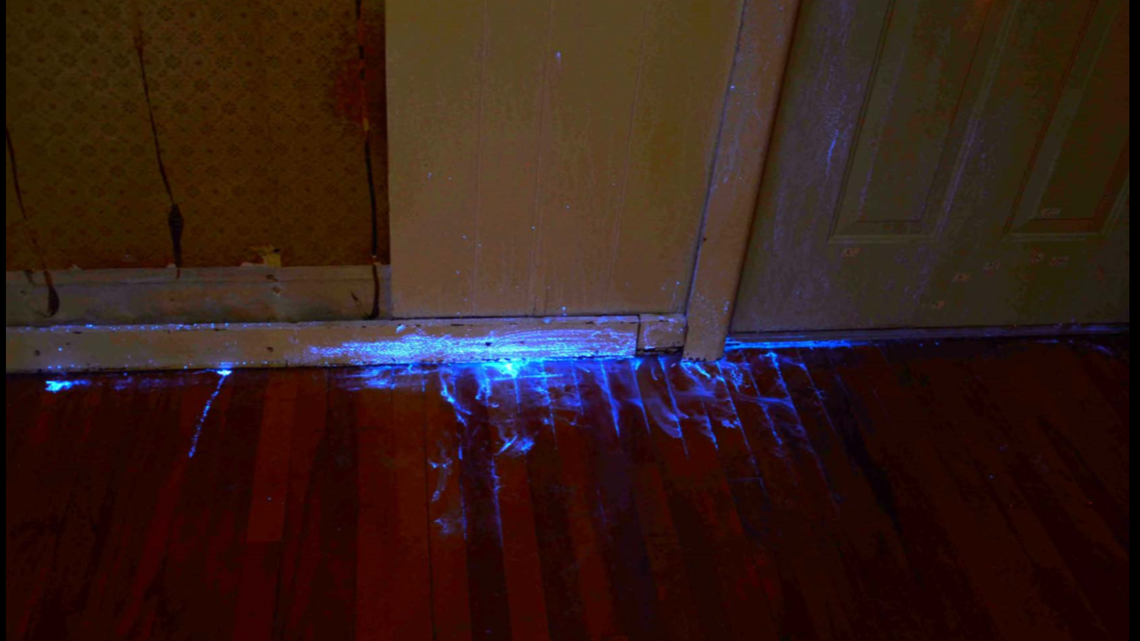
Using Luminol, a chemical that glows blue when in contact with blood, the ETs made another discovery. “The (blood) stain had indication of wiping through it, which is indicative of someone cleaning up,” Cote says.
Then there was a hole in one section of drywall that caught their eye.
“One stood out, fairly apparent it was a bullet hole.”
So, the technicians searched the debris pile, looking for the piece of paneling that was on that section of wall.
“That gotcha moment, if you will — I turn the paneling around and see a big green bump protruding from it, readily apparent it was chewing gum."
Chewing gum that was pushed into the bullet hole, into the paneling and covered up with a piece of paper.

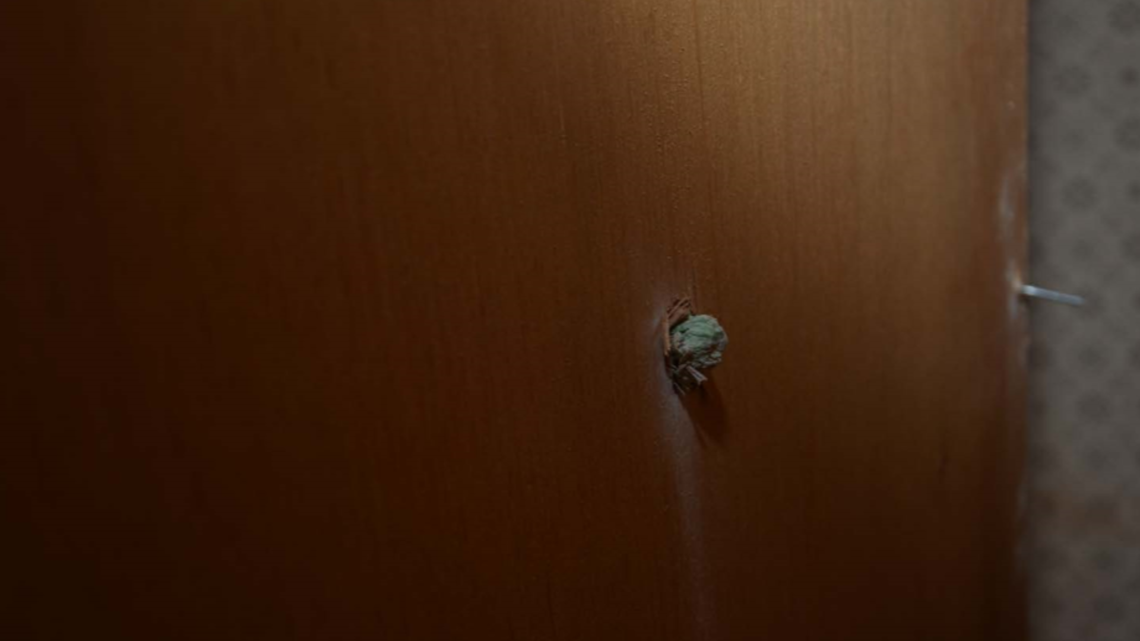
“So, my next thought is, who puts chewing gum in the hole where the bullet just went? Most likely the shooter."
And the likelihood of DNA being on chewing gum is fairly high.
“It was going to take a while for the DNA to come back, but at least we have a path to continue to move forward.”
DNA later confirmed that the DNA on the gum and the paper led to just one man, Anthony Pratt.
“Some of this is great science and some of this is pure luck.”
And timing, all of that debris from the apartment was set to be tossed in a dumpster the next day and would have been hauled away.
“It’s just amazing that some of these things came into line that allowed this case to progress”.
Then, behind where the paneling was – behind that section of drywall – technicians found what they were looking for: the bullet that killed Margarita lodged in a wooden stud.
THE SUSPECTS
Detectives were able to locate the previous tenants, the Jennings, at their new apartment on Berkshire Road in Portland.
The Jennings told police the last time they saw Margarita was on Nov. 10, 2012, when she had dropped them off in the Old Port at 11 p.m. to celebrate Christopher’s birthday.
Margarita was also supposed to pick them up, but the Jennings called and spoke to her at 1 a.m. to tell her she didn’t need to pick them up. They were taking a cab to PT’s Showclub.

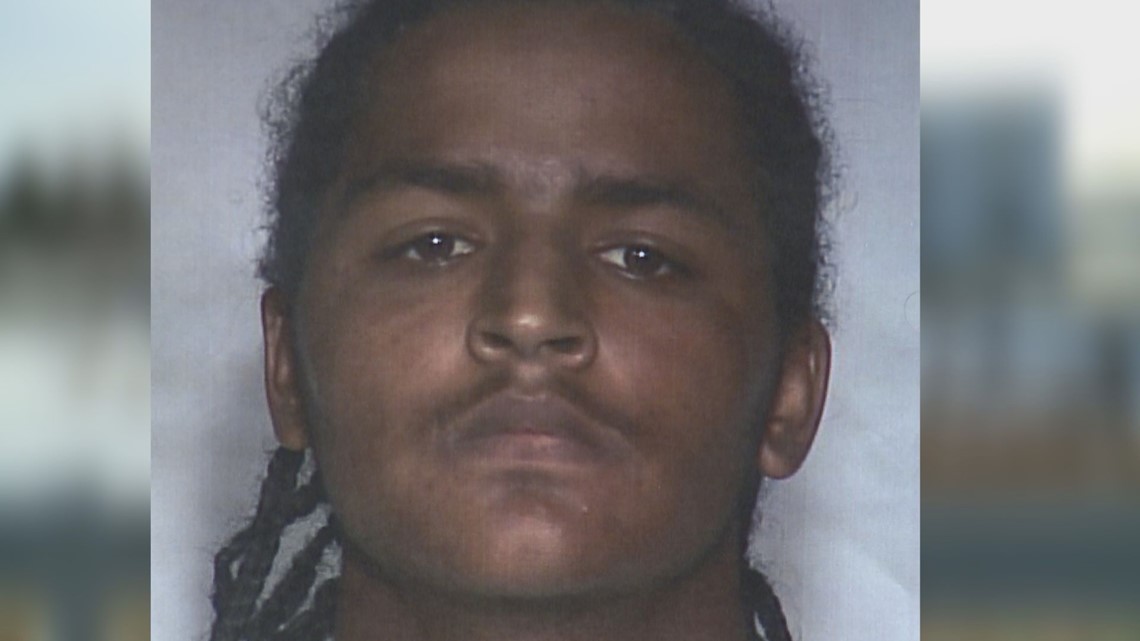
The Jennings say they came home around 4 a.m. and found Pratt sleeping on the couch with their infant daughter. Margarita was not there, but her purse was.
The next morning, the Jennings said Pratt asked them for a ride to the bus station. He told them he had to go back to New York to take care of his sick grandfather.
DOMESTIC ASSAULT CLUE
On Feb. 7, 2013, Portland police received another clue, this one from the Westbrook Police Department. Margarita was still married to Cary and often returned to their Westbrook home.
She did just that on Nov. 9 and Pratt was not happy about it.
On Nov. 10, Pratt took a cab to her apartment and pounded on the door. When Margarita answered Pratt beat her, pulled her hair and dragged her down a flight of stairs. A neighbor called police.
When Westbrook police arrived Margarita hid Pratt in a closet. Rita had minor injuries, but she refused medical attention and refused to tell police who assaulted her. Westbrook police took pictures of her and left.

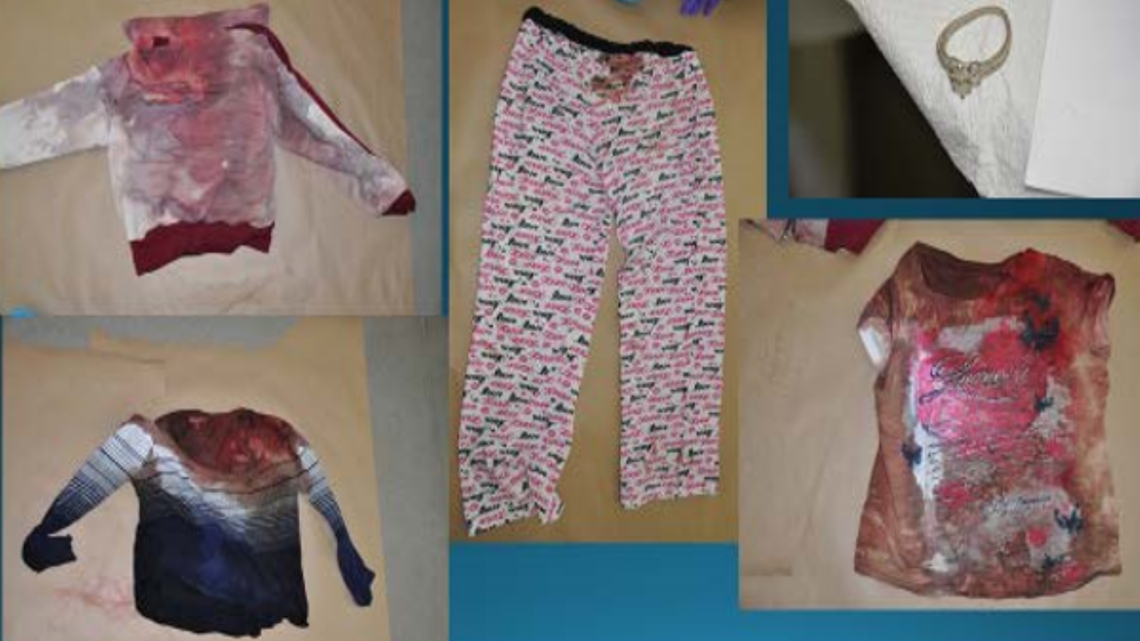
“That’s when we’re able to look at photographs of her that day and she is literally wearing all of the same clothing she was found in. Ultimately, we determine that it was later that night she was killed," Cote says.
THE SMOKING GUN
Meanwhile, a man comes forward with information about a gun being sold to Anthony Pratt and Christopher Jennings. The man said Pratt wore gloves when handling the gun. It was determined the gun had been stolen from a house in Benton, Maine.
Police identified and contacted the victim of the burglary. He showed police two posts in his backyard that he used for target practice.
Police brought the posts back to the police department and evidence technician Victor Cote extracted four bullets from the posts.
Ballistic experts were able to determine that all of those bullets in the fence post had been fired from the same gun as the bullet found in the wooden stud in the living wall at the West Concord Street apartment.
On March 3, 2013, detectives interviewed Christopher and Tunile Jennings, separately.
The Jennings were told that Margarita has been murdered in their apartment, while their children were in the home. Christopher Jennings was confronted with the fact that his DNA was found on Margarita’s genitals during the autopsy.
Jennings admitted he had sex with Margarita in the days before his birthday and that Tunile Jennings told Margarita she would kill her if she ever found out she was sleeping with her husband.
Police asked Christopher Jennings if he would make a recorded phone call to Pratt. Jennings agreed and during the call, Jennings told Pratt that Margarita was killed in their apartment. Pratt told Jennings, “I don’t know what to do. What do you want me to do, Chris?”
While detectives are interviewing the Jennings, a search warrant was being executed at their new apartment on Berkshire Road. Evidence technicians found what appeared to be a blood stain on an entertainment center, furniture that used to be in the West Concord Street apartment.
A tactical officer who was clearing the house found an attic entryway in a closet, in a child’s bedroom in the new apartment.


“They used a mirror to basically peak in the attic because you don’t want to poke your head up there if someone is up there. By doing so they could see a handgun sitting just inside the attic hatch, up on some insulation. It was wrapped in what appeared to be a tank top.”
The tank top had discoloration, similar to a bleach stain, where it had been in contact with the gun. The gun, a .40 caliber High Point pistol, was examined. It was determined the bullet found in the stud in the wall at the West Concord Street apartment had been fired from that gun. Swabs taken from the gun came back with DNA from both the Jennings, but not Pratt.
“It’s not necessarily surprising to us. That doesn’t say they were the suspects. It was wrapped in [Tunile’s] shirt and [Christopher] moved it from their house. And Pratt was known to wear rubber gloves when handling guns.
Christopher Jennings later told police he didn’t tell them about the gun because he’s a felon and didn’t want to get in trouble. He told detectives he took the gun to their new apartment when they moved.
POLICE CLOSE IN ON PRATT
On April 2, 2013, detectives went to New York to interview Anthony Pratt. Pratt said the last time he saw Margarita was at 11 p.m. on Nov. 10, when she dropped the Jennings off in the Old Port. He also told police that Christopher Jennings had the cell phone with him that night.
When police told Pratt they had evidence that Margarita received a call from that phone at 1 a.m., Pratt had no explanation. Pratt denied assaulting Margarita at her apartment on Nov. 9, but did admit he “grabbed her up a little bit.”
Detectives showed Pratt a picture of the piece of paneling with the piece of gum in it; gum that had his DNA on it. Pratt told police he did not kill Margarita and he did not know how his gum got into the hole.
Finally, police asked Pratt, why he never tried to call Margarita, who Pratt had apparently proposed to in late October. They asked him why he never came back to Maine when she went missing.
At the end of the interview, Pratt was arrested and later charged with murder.
STATE VS. ANTHONY PRATT
Lisa Marchese, Maine’s deputy attorney general, has prosecuted more than 100 murder cases over the course of her career. The Margarita Scott case was one of them.
“There were several unique things about this case,” Marchese says.
There were multiple crime scenes, there was a period of time between when Margarita was killed and when her body was found, which presented a challenge. And there were good alternate suspects.
“The Portland Police Department did a great job looking at everything and trying to rule them out,” Marchese says.
Marchese says cell phones played an important role in this case.


Detectives were able to put the Jennings in the Old Port at 1 a.m. The Jennings had borrowed a woman’s phone to call Margarita, and at PT's Showclub, a dancer gave Christopher Jennings her phone. She wanted him to call his phone so she would have his number in her recent calls.
Cell phone activity came into play again.
“When you look at the Jennings cell phone, you saw they were trying to call Rita after she disappeared, you look at Cary’s cell phone, he was trying to contact Rita after she went missing but you never saw the defendant trying to contact her and that’s because he knew she was dead.”
Marchese says the work the evidence technicians did made the case that much more compelling. “They were tenacious. They didn’t take any short cuts. They were meticulous, they were thorough.”
And in the end, it made all the difference. It took a jury eight hours to find Anthony Pratt guilty of murder.
“It proved beyond all doubt that it was Anthony Pratt who was responsible for this crime,” says Marchese.
A brutal crime that took a team to solve.


"It’s why we come to work, essentially, to try to serve and protect. In our field via the evidence, the officers on the front lines, detectives are doing interviews with people. It’s all for the common goal" Cote says. "Hopefully, you bring justice to victims.”
Anthony Pratt is serving a 42-year prison sentence.

